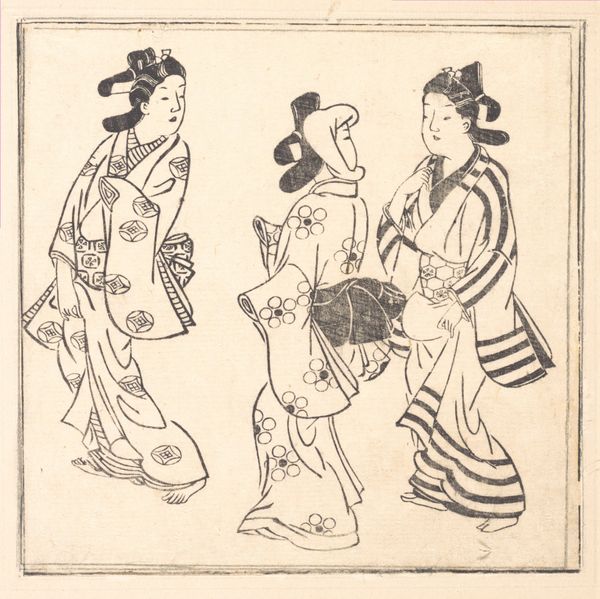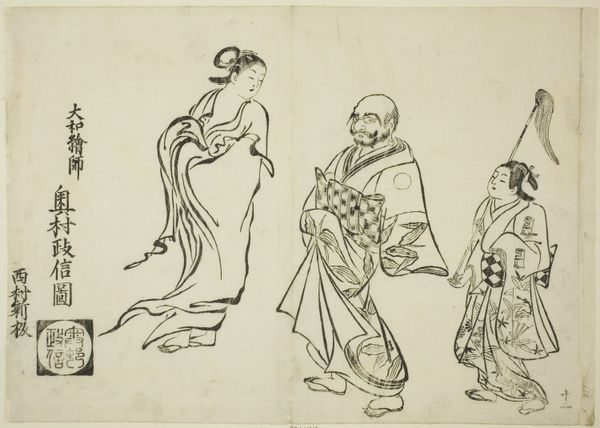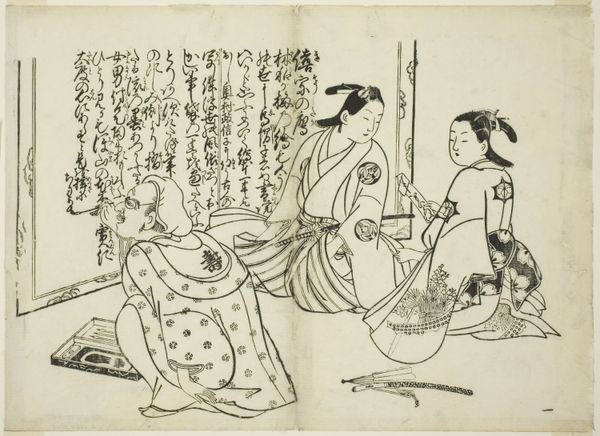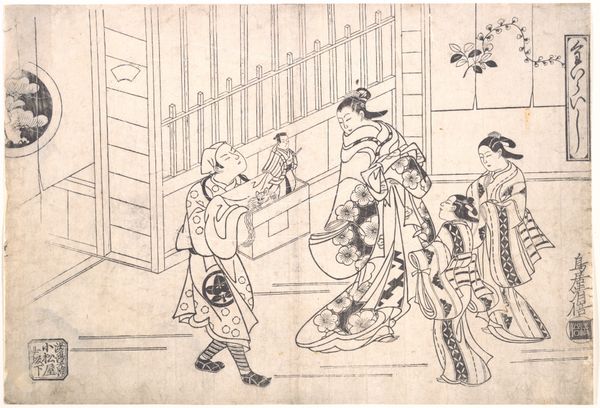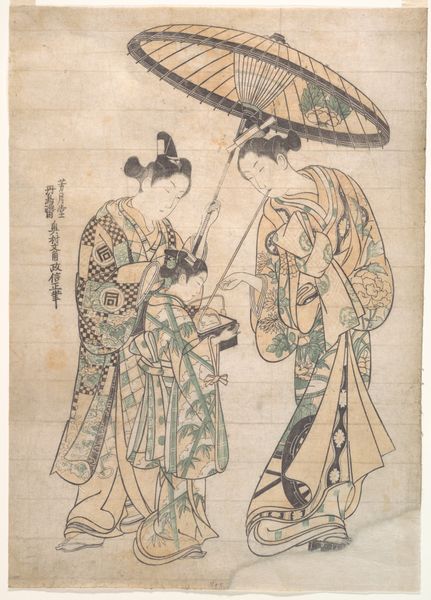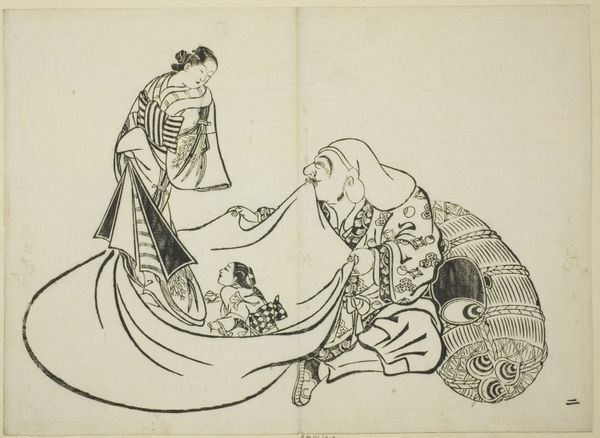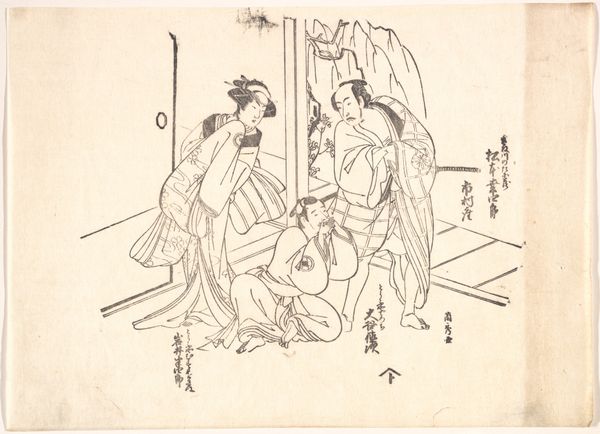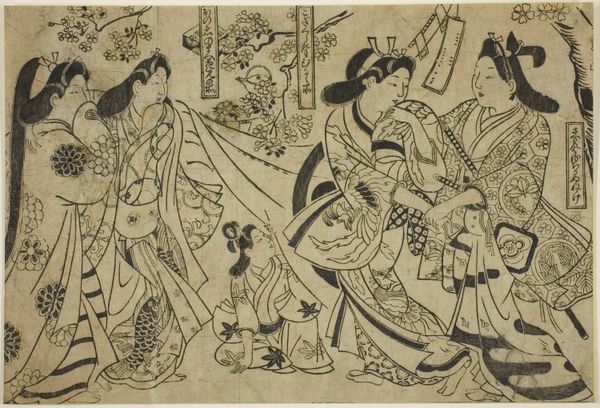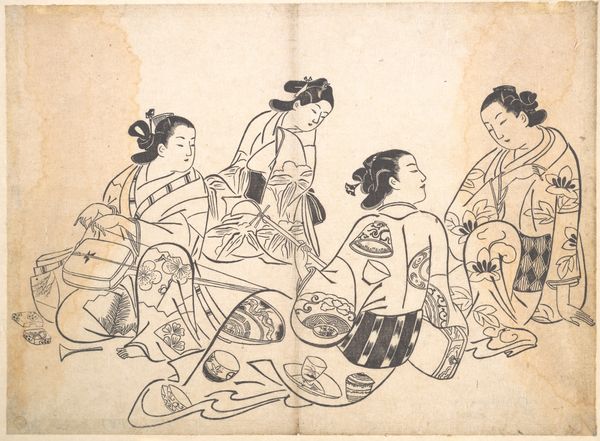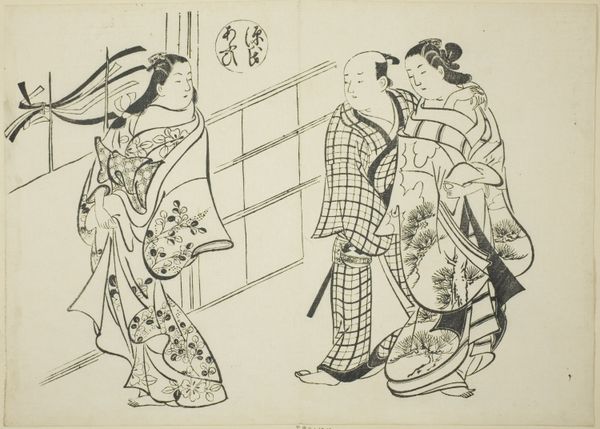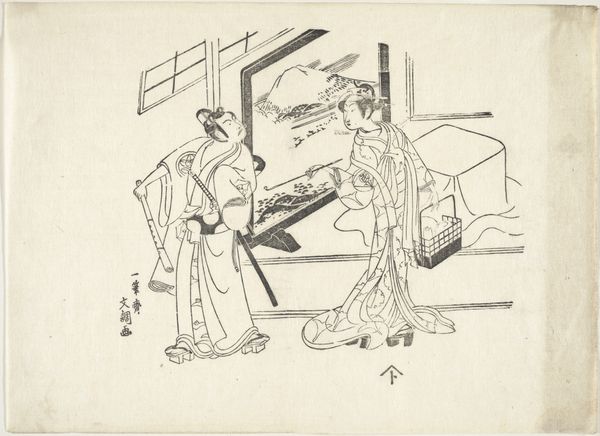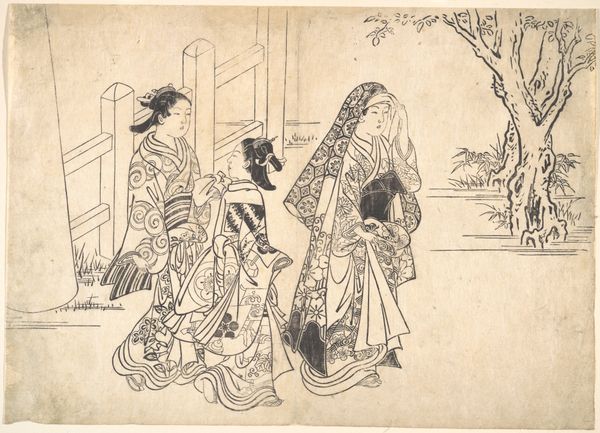
Leaf from One Hundred Japanese Women 1685 - 1705
0:00
0:00
# print
#
asian-art
#
ukiyo-e
#
figuration
#
line
Dimensions: H. 6 1/2 in. (16.5 cm); W. 6 3/4 in. (17.1 cm)
Copyright: Public Domain
Editor: Here we have "Leaf from One Hundred Japanese Women" by Hishikawa Moronobu, created sometime between 1685 and 1705. It’s a print currently residing at the Metropolitan Museum of Art. What strikes me immediately is how the figures, rendered in such stark lines, nonetheless possess a certain delicacy. What compositional elements stand out to you? Curator: Observe how the artist utilizes the formal element of line to delineate form and create a dynamic interplay of positive and negative space. Notice the intricate patterns adorning the women's kimonos; they establish a visual rhythm that guides the viewer's eye across the surface of the print. Are you struck by the limited tonal range of the print? Editor: Yes, it’s almost entirely black and white. But I find it amazing how much detail is achieved using just line and pattern. Is there something about the subject matter here, these women, that informs the work formally? Curator: Precisely. Consider how the artist emphasizes contour over volume. There's a flatness to the figures, a deliberate choice that enhances the overall graphic quality of the print. This emphasis can also reflect philosophical traditions around minimalism or a lack of interest in replicating photorealistic three-dimensionality. Does this stylistic choice align with broader aesthetic tendencies in ukiyo-e prints? Editor: That's fascinating. The flatness, as you say, combined with the detail in the patterns really creates an interesting tension. The print feels both decorative and carefully observed. I hadn't thought about that connection to ukiyo-e traditions. Curator: Indeed, it reveals a sophisticated engagement with form, surface, and the very nature of representation itself, doesn't it? Editor: Absolutely. Thank you for pointing out how much the formal elements contribute to the work’s overall impact and place within ukiyo-e art. Curator: My pleasure; looking closer always enhances appreciation.
Comments
No comments
Be the first to comment and join the conversation on the ultimate creative platform.
